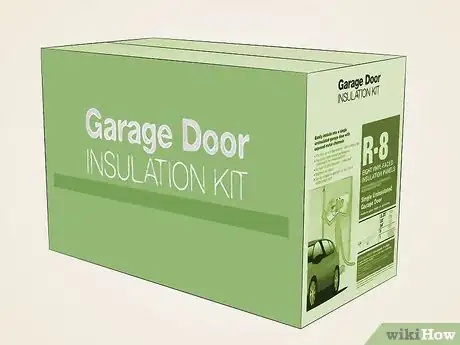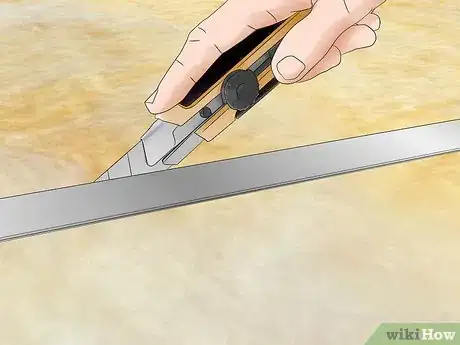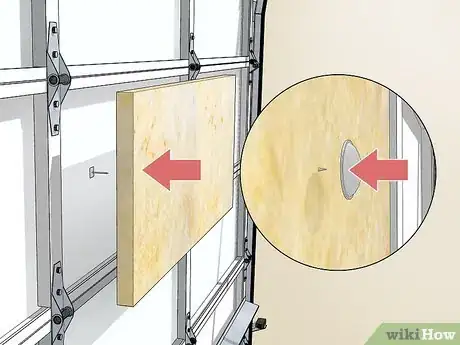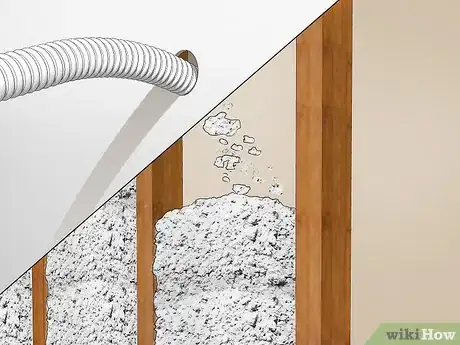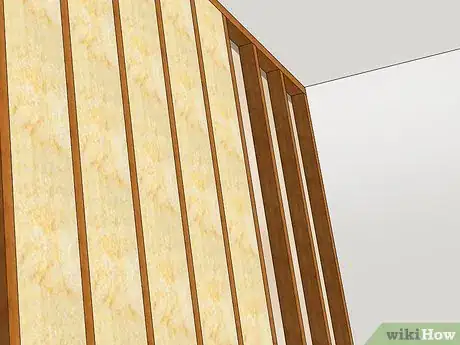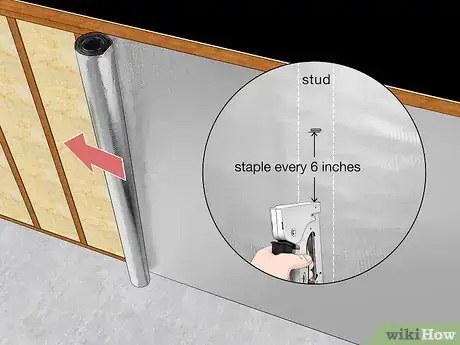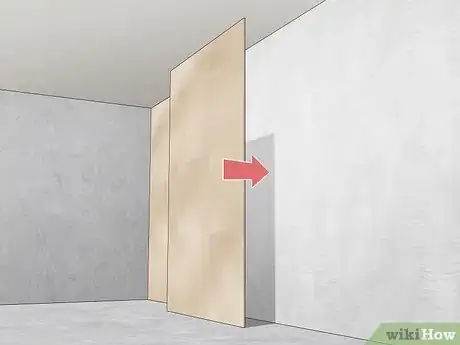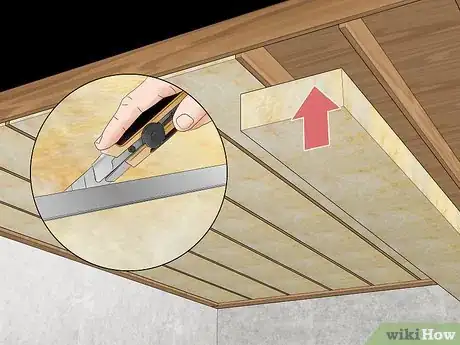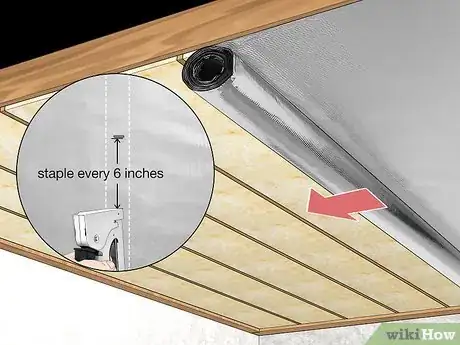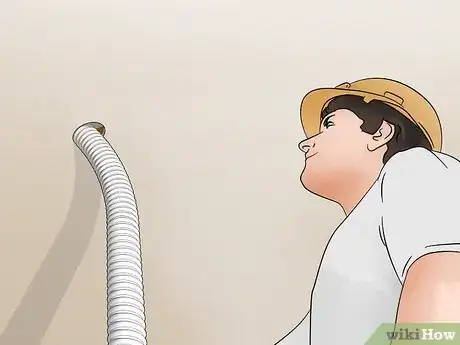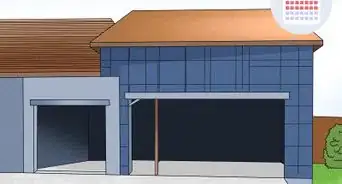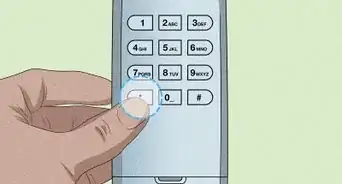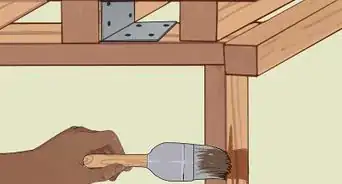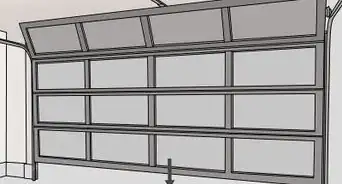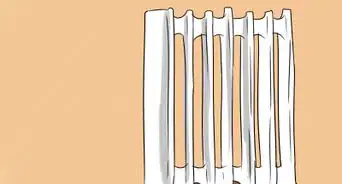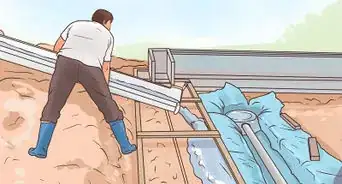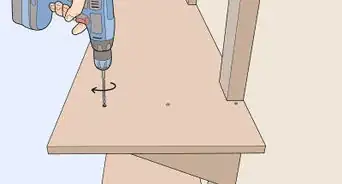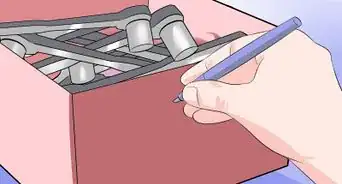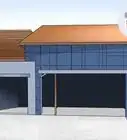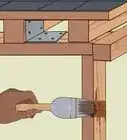This article was co-authored by Kevin Schlosser. Kevin Schlosser is a Home Improvement Specialist and the Owner of Home Tech Handyman Ltd. With over 20 years of experience, Kevin specializes in age-in-place installations, flooring, roofing, and general remodeling handyman services. Kevin holds a blend of construction and in-home technology-related certifications including NAHB Certified Age-in-Place Specialist, CEDIA membership and certifications, and a Certification from the Association of Certified Handyman Professionals. Also, he is in training to receive certifications in Construction, Project Management, and other CEDIA qualified system integrator certifications. He is fully-insured in the state of Colorado.
This article has been viewed 137,790 times.
Whether you want to insulate your garage to help reduce energy costs in your home, soundproof it, or turn it into a fully-finished additional room of your house, it's a project you will be able to do yourself with inexpensive insulation. Insulate your garage door with a garage door insulation kit and use standard pre-cut batt insulation to insulate the walls and ceilings of your garage. In just a few hours, you'll have a quieter and more comfortable garage!
Steps
Insulating a Garage Door
-
1Purchase a garage door insulation kit from a home improvement store. A garage door insulation kit is the easiest way to insulate your garage door because it comes with everything you need. Kits come with insulation rolls or boards that are cut to fit standard garage door panels, retainer pins to hold the insulation in place, and sometimes utility knives and gloves.[1]
- Garage door insulation kits start at about $50 USD for a basic kit. More expensive kits come with more tools and accessories.
-
2Measure and mark 12 in (30 cm) from each edge of the panel. Put the end of a tape measure at the midpoint of 1 edge of the garage door panel. Measure 12 in (30 cm) in towards the center. Make a mark at this point with a pencil to show where you will place a retainer pin. Repeat this for the other side so there are 2 marks on the garage door to place 2 retainer pins.[2]
- Do this for each garage door panel until each panel has 2 retainer pin placement marks.
- Some kits may also come with adhesive or tape to hold the insulation in place. Always refer to any instructions on the kit you purchased to secure the insulation properly.
Advertisement -
3Peel off the backing from the retainer pins and stick them on the marks. Take off the adhesive backing paper from the back plates of the retainer pins and then press them firmly into place over each placement mark you made. Place 2 retainer pins on each garage door panel.[3]
- The retainer pins will stabilize the garage door insulation so that it doesn't fall off when the garage door is open and hanging above your car.[4]
-
4Trim the insulation to fit with a ruler and a utility knife if necessary. Hold an insulation roll or board in place over a garage door panel and mark anywhere that it needs to be cut to fit so that it fits snug between the garage door rails and the edges of the panels. Place the insulation vinyl-side-down on a piece of scrap plywood. Line a ruler up with the mark you made and trim off the excess insulation with a utility knife.[5]
- The insulation that comes in your kit will already be cut close to the size of garage door panels, but you may need to make minor adjustments for them to fit your specific garage door.[6]
- You can make cutouts in the insulation for anything on the inside of the garage door, such as a handle or a lock. Hold the insulation over the handle or lock and draw a rough outline where you need to make a cutout. Use your utility knife to cut away the insulation inside the outline you drew.
- You should wear gloves when you handle and cut insulation to avoid getting fiberglass slivers.
- You can put talcum or baby powder on your forearms and hands while working with fiberglass.
- It will prevent the fiberglass from accessing your pores.
- After finishing your work, when you remove the powder, your skin will not itch.
-
5Push the insulation into place over the retainer pins and snap the caps on. Line up the insulation with the vinyl side facing towards you and push it onto the retainer pins until they poke through the vinyl. Push the retainer pin caps on until they snap securely into place.[7]
- Repeat the process for each garage door panel until you have completely insulated your garage door. Most insulation kits are designed to cover a garage door that is 9 ft (2.7 m) wide. If your garage door is bigger, then you will need additional kits to fully insulate it.
- You should check the balance of your garage door after you insulate it because insulation adds weight. Open it halfway and then stop it and let it hang. It should stay in place without dropping if it is balanced. If the door falls when you let go of it halfway, then hire a garage door mechanic to adjust the spring tension.
Adding Insulation to Garage Walls
-
1Insulate all the walls if you want to create a finished garage. Add insulation to the walls of the garage that face the outdoors when you want to turn it into a fully functional room of your home. This will control the temperature within the garage and protect it from street noise.[8]
- You only need to insulate the walls that are shared with another room in your home if your main goal is cutting down on energy costs in your home. This will help protect your home from cold or hot garage air, as well as any noise from your garage.[9]
- Insulation is a great sound barrier as well as a way to control temperature. If you are using your garage as a workshop, or for other noisy activities such as drum practice, then insulating it can help protect your neighbors and the rest of your home from the racket.
-
2Hire a contractor to blow in insulation if the garage already has drywall. Some garages may have drywall but no insulation. To insulate these walls without replacing the drywall, a contractor will come and open a small hole in the drywall, spray cellulose insulation in, then patch the hole.
- Blow-in insulation can be installed in just a few hours, however, it is typically more expensive than do-it-yourself insulation since you will need to pay a contractor to do the installation.
- Your other option, in this case, would be to remove the drywall and proceed to insulate the wall yourself normally. It is recommended to use blow-in insulation so that you don't destroy the drywall and create more work and expenses.
-
3Stuff batt insulation between the studs on each wall if the garage isn't drywalled. Put on gloves, goggles, and a facemask before you handle the insulation. Stuff pieces of batt insulation into the framework from the floor to the ceiling. Trim any pieces to fit with a utility knife and a ruler if there is extra space at the top or non-standard spacing between studs.
- Batt insulation is the standard cotton-fiberglass insulation used in housing and it is already cut to fit between standard framework studs.
- Batt insulation comes in compressed packaging. Make sure you clear enough space in your garage so that when you open the packages you have room to work.
- For walls connected to other rooms in your home, install the batt insulation with the paper side backward facing the connected room. The paper side should always go towards the space that you are trying to insulate most, so in this case, the room inside your home takes priority over the garage. For walls that are not connected, install the insulation with the paper side facing inwards towards the garage.
- Standard studs are placed every 16 in (41 cm) in the framework of housing.
-
4Use rigid foam insulation as an alternative to batt in high-moisture areas. Use rigid foam insulation if parts of your garage walls touch masonry. Cut the foam boards with a utility knife to fit between studs in these high-moisture areas and use batt insulation for the rest of the garage as normal.
- Rigid foam insulation is almost twice as expensive as batt insulation. Batt insulation is the cheapest and most efficient form of garage insulation.
- You can use a small can of spray foam to seal cracks and crevices, such as those around windows and doors, where rigid foam and batt insulation won't fit.[10]
-
5Staple a plastic or foil vapor barrier over the batt insulation. A vapor barrier is important to protect the insulation from getting moist and developing mold. Staple the barrier tightly over the insulation along the top of the framework and down the studs with a staple every 6 in (15 cm).
- Polyethylene plastic is the most common kind of vapor barrier. You can buy sheets of it at a home improvement center.
- Cut away any excess vapor barrier with a utility knife after you have stapled it and completely covered the insulation.
-
6Cover the walls with drywall if you want to create a more complete room. You don't need to install drywall unless you want to create a completely finished look in your garage. Hire a drywall contractor unless you are confident enough to do it yourself.
- Drywall will greatly increase the cost to your garage insulation project, but you can also use it to turn your garage into a fully functional additional room of your home. Decide if it is worth the extra cost and effort depending on the end result you want.
Putting Insulation in the Garage Ceiling
-
1Roll out batt insulation between the rafters if there is an attic above the garage. Take your packages of batt insulation up into the attic or crawlspace. Put on gloves, goggles, and a facemask before you start laying the insulation. Cut the packages open and roll the batts out, with the paper side down, between the rafters on the floor of the crawlspace that is above the garage.[11]
- Trim batt insulation with a utility knife to fit any irregularly-sized spaces in the rafters.
- You can use a can of spray foam insulation to seal hard-to-reach areas and small crevices where you can't fit batt insulation.
-
2Staple a vapor barrier sheet over the insulation in the attic. Cover the newly insulated area with a vapor barrier to protect against any moisture that gets into the attic. Use a staple gun to staple the sheet to the rafters every 6 in (15 cm). Cut away any excess parts of the sheet with a utility knife.
- Polyethylene plastic or foil vapor barriers are the most common and are readily available at your local home improvement center.
-
3Hire a professional to blow in insulation if the rafters are already covered with drywall. Some garages have a finished ceiling but no insulation. In this case, hire a blow-in insulation contractor to come and open up small holes in the ceiling and fill it with blow-in insulation.
- Blow-in insulation is not a process that you can do yourself, but it is the recommended option to get insulation into ceilings that are already sealed up. It would be more expensive and time-consuming to unseal the ceiling and then rebuild it.
Warnings
- Always wear gloves, goggles, and a facemask when you work with fiberglass insulation.⧼thumbs_response⧽
Things You'll Need
Insulating a Garage Door
- Garage door insulation kit (insulation rolls or boards and retainer pins)
- Utility knife
- Ruler
- Measuring tape
- Gloves
Adding Insulation to Garage Walls
- Batt insulation
- Vapor barrier
- Utility knife
- Staple gun
- Gloves
Putting Insulation in the Garage Ceiling
- Batt insulation
- Vapor barrier
- Utility knife
- Staple gun
- Gloves
References
- ↑ https://www.familyhandyman.com/garage/exactly-how-to-insulate-a-garage-door/view-all/
- ↑ https://www.familyhandyman.com/garage/exactly-how-to-insulate-a-garage-door/view-all/
- ↑ https://www.familyhandyman.com/garage/exactly-how-to-insulate-a-garage-door/view-all/
- ↑ https://www.bobvila.com/articles/how-to-insulate-a-garage-door/
- ↑ https://www.familyhandyman.com/garage/exactly-how-to-insulate-a-garage-door/view-all/
- ↑ https://www.bobvila.com/articles/how-to-insulate-a-garage-door/
- ↑ https://www.familyhandyman.com/garage/exactly-how-to-insulate-a-garage-door/view-all/
- ↑ https://homeownerfaqs.com/garage-door-insulation/
- ↑ https://homeownerfaqs.com/garage-door-insulation/
About This Article
To insulate a garage, purchase a garage door insulation kit from a home improvement store. Then, measure and place the 2 retainer pins by marking 1 foot from each edge of the panel. Once your retainer pins have been placed, trim the insulation to fit and use the retainer pins to hold it in place. Alternatively, if you want to insulate the walls of your garage, but already have drywall, you'll need to hire a contractor to install cellulose insulation. Otherwise, put on gloves, goggles, and a facemask, and start stuffing pieces of batt insulation into the framework from the floor to the ceiling. If you live in a high-moisture area, you may want to try using rigid foam insulation, which is more expensive than batt insulation but more effective for wet climates. For more tips, including how to insulate a garage ceiling, scroll down.
